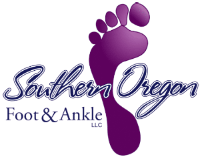If you’ve noticed that your second toe overlaps your big toe, you may have a crossover toe. Now, we know you want to restore that toe to its proper position—as soon as possible—but, before we highlight treatments for overlapping toes, we need to explain why the condition develops in the first place. That way, we can explain why treatments have to simultaneously address both the symptoms of crossover toe, and the underlying causes.
What Exactly is a Crossover Toe?
A crossover toe can form for many different reasons. But, it many cases, that crossover toe is really a hammertoe, masquerading with a less typical presentation. You see, when it comes to hammertoes, we’re used to seeing joints that grow enlarged or that buckle. Yet, the weakening of the joints that causes hammertoes could also make that toe float off the ground, eventually coming to rest on its neighbor. At that point, your overlapping toe can make wearing shoes challenging, and can increase your risk for painful corns—especially on the tops of your toes, where they rub against those shoes. Clearly, you’ll need to treat these overlapping hammertoes quickly to avoid complications. But first, you have to explore what caused the hammertoe deformity.
What Causes Crossover Toes to Develop? ![foot with a crossover toe]()
Many overlapping toes are the result of bunions that put additional pressure on the feet and toes. But how could a bony bump beneath your great toe joint make your toes crossover one another? Here’s the story.
Bunions cause a rotation in the first metatarsal bone, located in your big toe. While that rotation is responsible for forming the bunion bump, it also causes movement in your toes, pushing your big toe toward its neighbor. And, when that movement isn’t addressed with bunion treatment, the great toe may end up sitting beneath the second toe, making the overlap a serious concern.
Crossover Toes After an Injury
While bunions can make your toes overlap, injuries can also lead to a crossover toe. Specifically, tears to the ligaments that sits beneath your toe joint can cause this deformity to develop. What does that chain of events look like?
Your toe joints are encapsulated in a series of ligaments. Thickest at its base—called the plantar plate—this grouping of ligaments is responsible for supporting your toe. So, if you injure that plantar plate, your toe may lose stability. At that point, it can float and crossover another toe.
If we suspect your crossover toe is due to a plantar plate injury, our podiatrists in Medford, OR will order an MRI to look for signs of tears or ruptures. After receiving the results of these images, we’ll know if an injury caused your crossover toe. And we’ll also know how to guide your treatment plan.
Treating Crossover Toes in Medford, OR
If we determine that hammertoes or bunions are the cause of your crossover toe, we’ll have to treat those deformities simultaneously. After all, if we don’t address the cause of your overlapping toe, it will return after treatment, even if we’re able to get it back into place initially. So, if you’ve got crossover toes as well as bunions or hammertoes, we’ll likely suggest a variety of treatments, including Lapiplasty, a 3D solution to the foot deformity that addresses all of its roots causes in order to provide lasting relief. At the same time, we’ll have to correct your hammertoe, using some of the treatment options we’ve reviewed in this blog post.
Treatments for Injury Related Overlapping Toes
What if your crossover toe is the result of an injury to your plantar plate? Your recommended course of treatment will depend on the severity of that injury. If you have a minor tear to the area, we should be able to correct your crossover toe without surgery, using minimally invasive treatments including buddy taping to restore strength to your toe, allowing it to eventually maintain its proper position without assistance. After your toe is straightened, you’ll need to wear custom orthotics. After all, imbalances in your foot put enough pressure on your plantar plate to cause this injury. So, we’ll have to correct those concerns with devices formed to your specific foot structure in order to prevent recurring injuries.
But what if your plantar plate ruptured? In this case, we’ll likely need to surgically repair the injury—and your crossover toe. Now, we understand that many patients prefer to avoid surgery at all costs. And, plantar plate surgery is complex. During the procedure, we need to gain access to a ligament covered by your second toe. Then, we’ll need to restore the toe’s alignment by anchoring that ligament to your toe bone. After this procedure, we’ll restrict your activity levels, keeping you in a surgical boot to keep pressure off your toe and foot. These restrictions will likely last for about 12 points, at which point you should be able to resume your full schedule of prior activities.
Crossover Toe Deformity: When to See Your Medford Podiatrists
If you’ve noticed that one of your toes doesn’t sit firmly on the ground, we need you to schedule an immediate appointment at our podiatry practice in Southern Oregon, also serving patients in Northern California. You see, the longer you wait to treat a floating toe, the more likely it is to overlap another toe, making your treatment plan more involved and extending your recovery period.
Are you waiting around, watching your toe lift, and hoping it will drop back to earth without any further action? We beg you to stop waiting: crossover toes won’t get back into their proper position without professional treatment. So, if you want to be able to fit into your winter boots come December, we urge you to schedule an consultation with our office today. When you come in, we’ll evaluate the cause of your crossover toe, and come up with the right treatment plan to get your toes back down where they belong.

